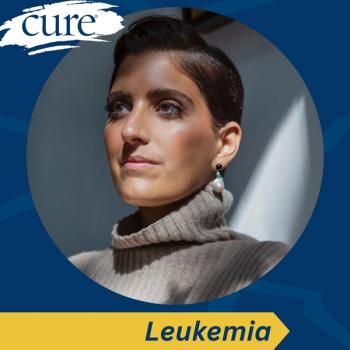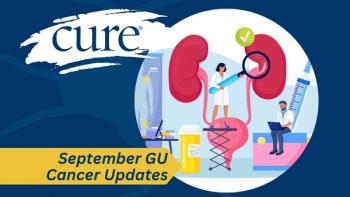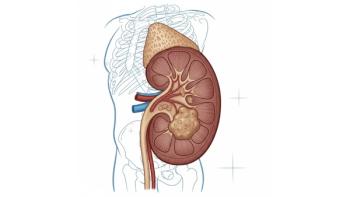
Gaining a Fuller Understanding of Neurotoxicity From CAR T Cell Therapy
Key Takeaways
- CAR T-cell therapies show high response rates but pose risks of neurotoxicities, including cytokine release syndrome (CRS) and encephalopathy.
- CRS, associated with macrophage activation syndrome, can be managed with tocilizumab, though prophylactic use is still under investigation.
Though clinical work is ongoing and early, researchers are already considering how to manage potentially fatal neurotoxicities in patients treated with chimeric antigen receptor (CAR) T-cell therapy.
Though clinical work is ongoing and early, researchers are already considering how to manage potentially fatal neurotoxicities in patients treated with chimeric antigen receptor (CAR) T-cell therapy. Carl H. June presented on this topic at the 2015 Society for Neuro-Oncology Annual Meeting, a meeting of over 1,000 oncology professionals.
CAR T-cell therapies have shown complete response rates of more than 90 percent across a variety of early phase studies for patients with hematologic malignancies, although these agents are not without adverse events. There are currently numerous CAR T-cell therapies in development; however, given his familiarity with the CD19-targeted CAR T-cell therapy CTL019, June specifically addressed the treatment of two toxicities associated with this agent: cytokine release syndrome and encephalopathy.
Cytokine release syndrome is a reversible adverse event that is related to macrophage activation syndrome (MAS). The hallmark signifier of MAS is elevated serum ferritin (greater than 500,000 ng/mL). The cytokine signature of MAS is elevated levels of IFN-gamma and IL-6; therefore, June suggests physicians use Actemra (tocilizumab) to reverse the adverse event.
A single injection of Actemra, which is approved for rheumatoid arthritis and juvenile idiopathic arthritis, can eliminate fever from cytokine release syndrome in four hours, according to June. Trials are ongoing to determine if the agent can be given prophylactically.
“What we try to do is treat patients — to keep them out of the [intensive care unit],” said June, Richard W. Vague Professor in Immunotherapy, Perelman School of Medicine at the University of Pennsylvania, during his presentation. “The primary symptoms really are fever, but the clinical toxicity is manifest by hypertension and respiratory failure.”
June said that the first two patients to experience cytokine release syndrome, (pediatric patients with acute lymphoblastic leukemia [ALL]) had fevers that started approximately four days after infusion and were correlated with increased cytokines (mainly IFN-gamma and IL-6). Additionally, patients in the phase 1 study for the CAR T-cell therapy also experienced tachycardia and hypertension four to five days after infusion along with liver function abnormalities, but not jaundice, and increased levels of lactate dehydrogenase.
Resolving organ failure took longer in patients with grade 3/4 cytokine release syndrome, June said, but was still reversed in almost all cases. Differences also remain across age groups and disease type, June said, though the reason is unknown. Altogether, three of 180 total patients treated with CTL019 have died due to cytokine release syndrome.
“In adults with CLL [chronic lymphocytic leukemia], cytokine release syndrome is more delayed than it is with ALL, for reasons that remain obscured,” June observed.
Two patients with multiple myeloma were treated with CTL019 in a pilot study and both experienced cytokine release syndrome. One patient’s cytokine release syndrome was severe and lasted three weeks, while the other had a milder event.
The connection between cytokine release syndrome and neurologic adverse events is apparent, though not completely understood, June noted. Overall, there are a number of neurologic adverse events that have occurred with anti-CD19 CAR T-cell therapy, all of which have a simultaneous or delayed onset with cytokine release syndrome. These toxicities have been observed in ALL, CLL, diffuse large B-cell lymphoma and multiple myeloma. Cases of neurologic adverse events with these agents have also been seen in ovarian cancer and pancreatic cancer.
Common symptoms of encephalopathy included aphasia, confusion, delirium and hallucinations, and occurred in 33 percent of pediatric patients with ALL. Two seizures were observed.
“In the case of this encephalopathy, it is not associated with response rates — unlike the cytokine release syndrome, which is associated with good responses,” said June said, while pointing out that encephalopathy may be related to CD19.
Similar events have been reported with Blincyto (blinatumomab), the anti-CD19 immunotherapy that is FDA-approved for the treatment for Philadelphia chromosome-negative relapsed/refractory B-precursor ALL. Though the cause of encephalopathy is not completely understood, the toxicity was generally short lived.
In the phase 1 pediatric ALL study for a CAR T-cell therapy, encephalopathy often presented after cytokine release syndrome and lasted a median of seven days, June noted. All patients recovered by day 18 and prior tocilizumab did not prevent the onset of encephalopathy. Two patients had seizures.
Before an anti-CD19 CAR T-cell therapy is approved, researchers and physicians alike hope to have a fuller understanding of how these drugs work and the toxicities associated with them, in order to develop treatment algorithms to prevent their onset.
At this time, the two CAR T-cell therapies that are furthest along are JCAR015, from Juno Therapeutics and CTL019, from Novartis. These agents have each received breakthrough therapy designations from the FDA, for their potential in patients with ALL.





